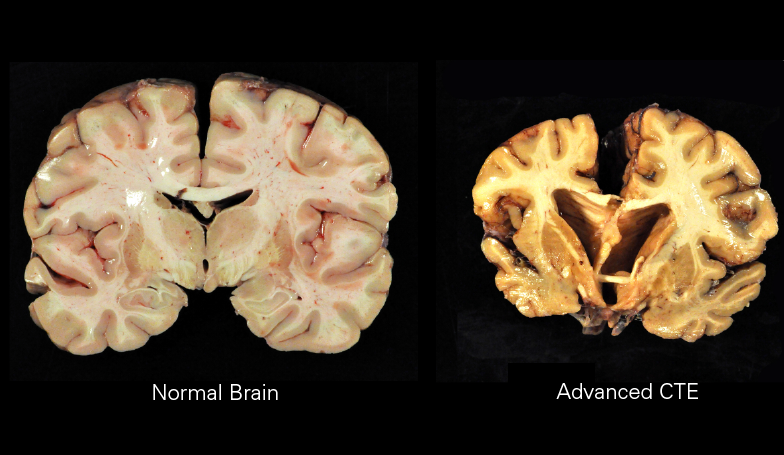CTE Breakthroughs May Diagnose the Disease While Living

Image Courtesy of Wikipedia
By Chris Carey
Chronic traumatic encephalopathy, commonly known as CTE, is a degenerative effect of repeated blows to the head and is often experienced by professional football players, boxers, and other individuals who undergo difficult physical conditions that lead to head trauma.
The term reached the mainstream following the 2015 movie Concussion, a true story that starred Will Smith and exposed the realizations of a forensic pathologist as he explored various violent and unexplainable acts by former professional football players who went on to die as a result of the incidents. According to the Mayo Clinic, less intense symptoms of CTE include difficulty thinking, impulsivity, emotional instability, substance misuse, depression, and more.
One of the key, and difficult, pieces of studying CTE and how it eats away at the brain is the fact that CTE is undetectable in a living organism. In other words, CTE is only identifiable once the individual has died so the brain can be subject to a full examination.
However, due to a recent development reported on by Axios News, key scientists in the field published a paper with consensus criteria for diagnosing CTE while the individual is still alive. The scientists believe that this is a step towards finding a biomarker, or a chemical signal in the body, for the disease.
The possible consequences of diagnosing CTE in a living football player, the game where CTE is most likely to occur, could result in extreme changes to the NFL as well as to the sport itself. Even with more and more safety precautions enacted by the NFL in recent years, the fears of doctors and scientists have not been totally assuaged.
For example, in 2017, a scientist studied 111 brains of former NFL players, finding that 110 of those brains had evidence of CTE.
Unfortunately, football is not the only sport to have some evidence of the phenomenon. Recently, Jake Paul, a Youtuber turned boxer, expressed concerns that some brain scans he had undergone before his recent knockout victory against Ben Askren showed signs of early onset CTE.
“My brain is on the line. Like you said, I’ve gone and gotten brain scans and have early signs of CTE,” said Paul.
Examples of young superstar athletes like Aaron Hernandez, Tyler Hilinski, and more, highlight the extreme dangers of CTE to individuals who have it as well as the people who live in proximity. The ability to pinpoint CTE at an early age and the possibility of scientific advances that could halt its progression are extremely promising and important in ensuring that athletes and even family and friends are as safe as possible.
As The Nation’s Dave Zirin put it, “the days of plausible deniability — by the NFL, by players, and by fans — will be coming to a screeching halt in the next several years.”
Should these scientific developments continue, it is likely that the NFL will incorporate more screenings and health checks of players in order to ensure that the tragic stories of young suicides, shootings, confusion, and depression if preventable do not continue due to the complacency or lack of knowledge of doctors and the NFL.






